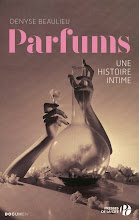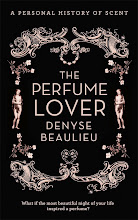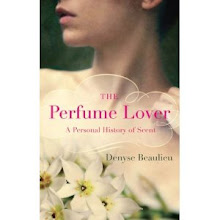The French Fifi Awards are now divided into 12 categories. Ten are given
out by a college of 806 jurors selected among every field of the industry.
In selective distribution, two products by Beauté Prestige International nab the top six awards:
Elie Saab Le Parfum by Francis Kurkdjian wins Best Feminine Fragrance,
Best Feminine Bottle, and best Feminine Media Campaign.
Kokorico by Annick Menardo and Olivier Cresp for Jean-Paul Gaultier wins
Best Masculine Fragrance, Best Masculine Bottle, and best Masculine Media
Campaign.
In the “distribution sous enseigne propre” category (fragrances only
sold in the brand’s shops), L’Occitane nabs the award for Best Feminine
Fragrance for Pivoine Flora, while Yves Rocher gets the Best Masculine
Fragrance award for Comme une Évidence Homme Green.
For mass-market products, Clin d’oeil Passionné Eau Fraîche by Bourjois
and Axe Provocation for Axe-Unilever nab the awards.
The two Prix Grand Public, given out by 20,500 members of the public
voting on internet who were offered a choice between the 15 top-selling
fragrances of 2011, go to: Amor Amor Forbidden Kiss (Cacharel/ L’Oréal Luxe) for Best Feminine
Fragrance and Hugo Just Different (Hugo Boss/ Procter & Gamble Prestige) for Best
Masculine Fragrance.
The Experts’ Award is given out to a product sold in less than 100
points of sale in France (i.e. niche and exclusive lines) by a jury composed of
beauty editors, evaluators from the major supply houses and bloggers (Octavian
Coifan of 1000fragrances, Sixtine Drossard of Ambre Gris, Nicolas Olczyk of
Parfums, Tendances, Inspirations and myself).
The Experts’ Award 2012
Orange Sanguine
by Ralph Schwieger
(Mane) for Atelier Cologne.
The Finalists
Still Life
by Dora Baghriche-Arnaud (Firmenich) for Olfactive Studio
Autoportrait
by Nathalie Lorson (Firmenich) for Olfactive Studio
Autoportrait
by Nathalie Lorson (Firmenich) for Olfactive Studio
Chambre Noire
by Dorothée Piot (Robertet) for Olfactive Studio
Myrrhiad
by Pierre Guillaume for Huitième Art
Juniper Sling
by Olivier Cresp (Firmenich) for Penhaligon’s
Santal Blush
by Yann Vasnier (Givaudan) for Tom Ford Private Collection
Santal Blush
by Yann Vasnier (Givaudan) for Tom Ford Private Collection
A note on the selection process for the Experts’ Award: as in the two
previous editions, a short list was compiled from the jurors’ pre-selection. In
2010/2011, we re-smelled and discussed the fragrances by name, which gave each
juror the opportunity of defending her top choices, and of swaying fellow
jurors in favor of more challenging compositions.
In this year’s edition, the 30 “long-short” list fragrances were smelled
blind. Though this is a much more objective process – a cross between a consumer
panel and an assessment by supply house evaluators – it tended to favor individual assessment over general discussion and favor legible products with
pleasing top notes over more complex compositions that give out their best when experienced over several hours.
This isn’t to say Orange Sanguine isn’t a lovely fragrance: it is. I
just feel that given a chance to defend creative perfumery, we might have put
forward something a tad more challenging.
Which is why I’m delighted to salute the other finalists: with two
fragrances in the short-short list, Céline Verleure’s brand-new Olfactive
Studio confirms its status as a major player, and with Myrrhiad, the maverick
Pierre Guillaume shows he can more than hold his own against big-house
perfumers like Olivier Cresp!
Fragrance Foundation France 20th anniversary award
After dinner, the guests of the Fragrance Foundation were asked to vote directly with their smartphones for the best fragrances of the past 20 years, picked among the winners for best feminine and best masculine from 1992 to 2011.
Best Feminine of the past 20 years
Narciso Rodriguez for Her
by Christine Nagel and Francis Kurkdjian
Best Masculine of the past 20 years
Terre d'Hermès
by Jean-Claude Ellena












 L'actu
L'actu 

